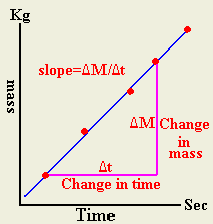|
Measuring Specific Latent Heat of Fusion of Ice
|
|
Objective
|
To enable the student to measure the specific latent heat of fusion of ice by an electric method |
|
Theory
|
Specific latent heat of fusion is the amount of heat that is needed change 1 Kg of a substance in the solid state into the liquid state at the melting point.
When an electric heater is immersed in a ice, the electrical energy flowing in heater will be totally converted into heat energy in the ice. From electricity, the electrical energy is given by E=Pt where "P" is the heater power in watts, "t" time in seconds and "E" electrical energy in joules. From heat, we know
that the heat gained by the ice is given by H=mc(T2-T1) where "H" is heat energy in joules, "m" ice mass in "Kg", "c" specific heat in "J/KgC", T1 ice initial temperature in degrees Celsius before heating, T2 is the ice temperature after heating in degree Celsius
Assuming there no heat lost to the surroundings of the ice, we can say the heat energy gained by the ice is equal to the electrical energy.
Heat energy gained by ice=Electrical energy given by heater that is Pt=mLf. By solving for "Lf" we obtain Lf=pt/m. Thus from this equation we need the following data to measure the specific heat of the ice
- Electric heater power. We can obtain this data from the specification of an electric heater
- Heating time: We need a stop-watch to measure the heating time
- Ice mass: we need a balance to measure ice that tuned into liquid
|
| Tools |
- Holding Container: to hold the ice
- Collecting Container: to collect liquid.
- Ice: to measure its specific latent heat of fusion
- Lagging: to prevent heat from being lost to the surroundings
|
| Equipment |
- Electric heater or Kettle: to supply heat
- Stop-watch: to measure time interval during which heat is supplied to ice
- Balance: measure the mass of the ice that melted
 
|
| Precautions |
- When heating the ice, immerse the heater completely in the ice
- Use lagging (heat insulators) to reduce heat loss to surroundings
|
|
Procedure and DATA
|
Method-I:
- Prepare all the needed tools and equipment
- Assemble the experiment as shown
- Place a quantity of ice in the funnel
- Place the electric heater in the melting ice packed in the funnel
- Switch on the heater and the stop-watch
- Collect the water from melting ice for several minutes
- Switch of the heater and the stop watch
- Record the time of the watch as "t"
- Find the mass of the collected water and record it as "m"
- Evaluate the latent heat of fusion from Lf=pt/m
- Calculate the average the three values obtained Lf
|
 |
| |
Heater Power "P" |
|
Watts |
|
| |
Collecting Container Mass "m1" |
|
Kg |
|
| Try |
Stop-Watch time |
Mass of Container+Liquid |
Liquid Mass |
Calculated
Lf |
| |
t |
M2 |
m=M2-M1 |
Lf=pt/m |
| 1 |
|
|
|
|
| 2 |
|
|
|
|
| 3 |
|
|
|
|
| |
|
|
Average |
|
|
Method-II:
- Prepare all the needed tools and equipment
- Assemble the experiment as shown
- Find the baker mass and record it as M1
- Read the heater power from its name plate and record it as "P"
- Place a quantity of ice in the funnel
- Place the electric heater in the melting ice packed in the funnel
- Switch on the heater and the stop-watch
- Collect the water from melting ice for several minutes
- Each five minutes record the time and the mass of water. Record mass in M2
- repeat step "7" for five times
- Evaluate the "liquid mass" in the fourth column
- Plot mass of water versus time
- Evaluate the slop from the graph
- Calculate the heat of fusion from m=(P/Lf) t where slop=P/ Lf
|
 |
| Heater Power (P) |
|
|
| Baker Mass (M1) |
|
|
| Try |
Time |
Mass of Container+Liquid |
Liquid Mass |
 |
| |
t |
M2 |
m=M2-M1 |
| 1 |
|
|
|
| 2 |
|
|
|
| 3 |
|
|
|
| 4 |
|
|
|
| 5 |
|
|
|
| |
|
|
|
|
|
| Analysis |
Questions
- What is the percentage error of your experiment? use %Error=(Actual-Experimental)/Actual
- If your experimental value is less than the actual value, then explain why?
- If your experimental value is greater than the actual value, then explain why?
- Name the objects that will gain heat other than the ice?
- Why did we use the electric heater rather than using Bunzen flame?
- Why does the heater should be completely immersed in the ice?
- Why should we the use the lagging?
|